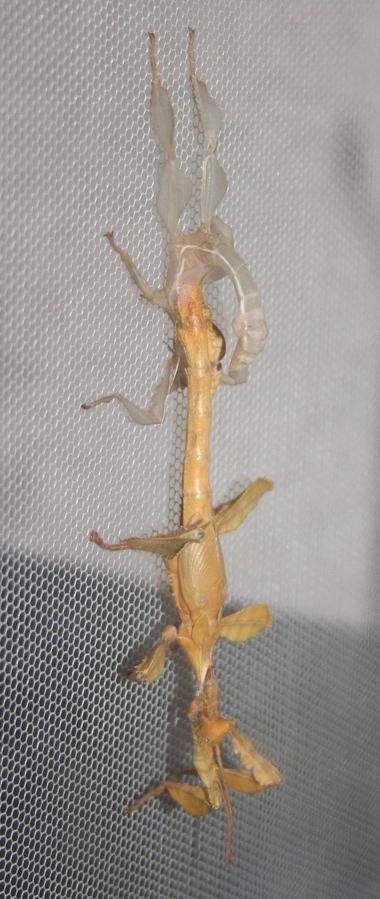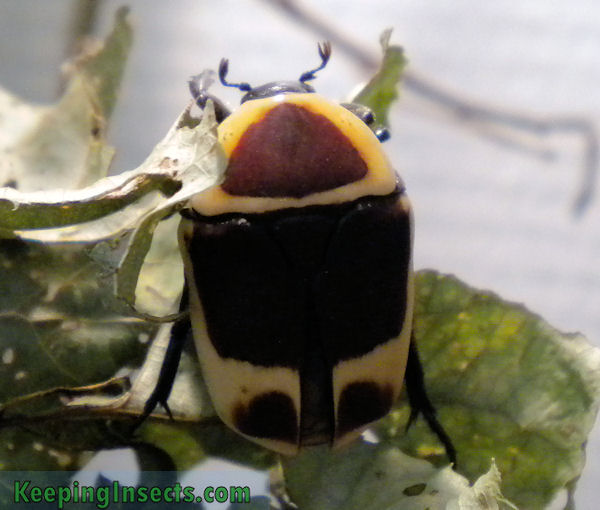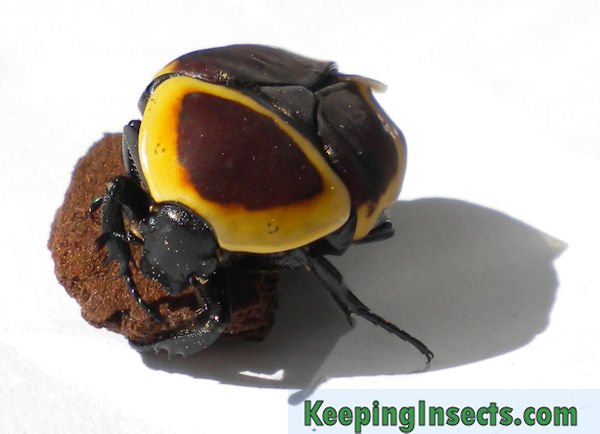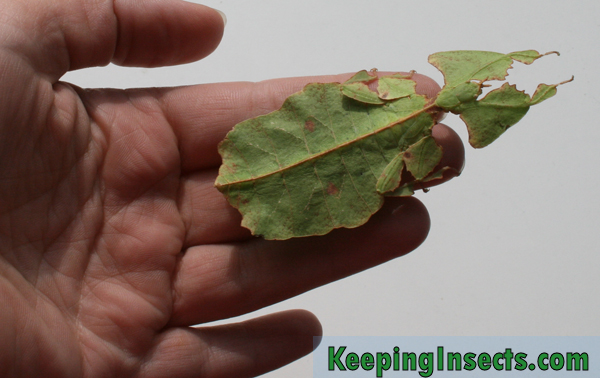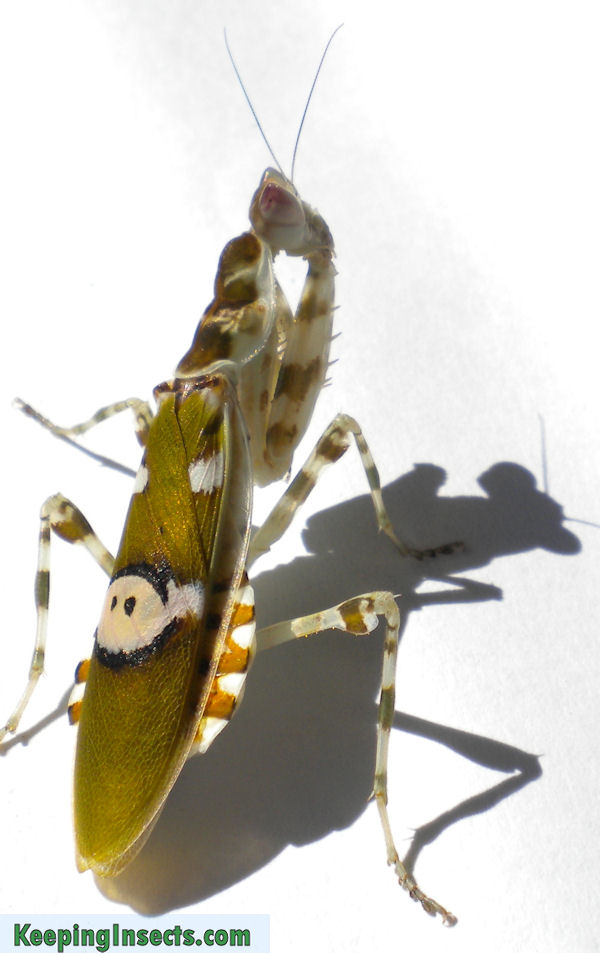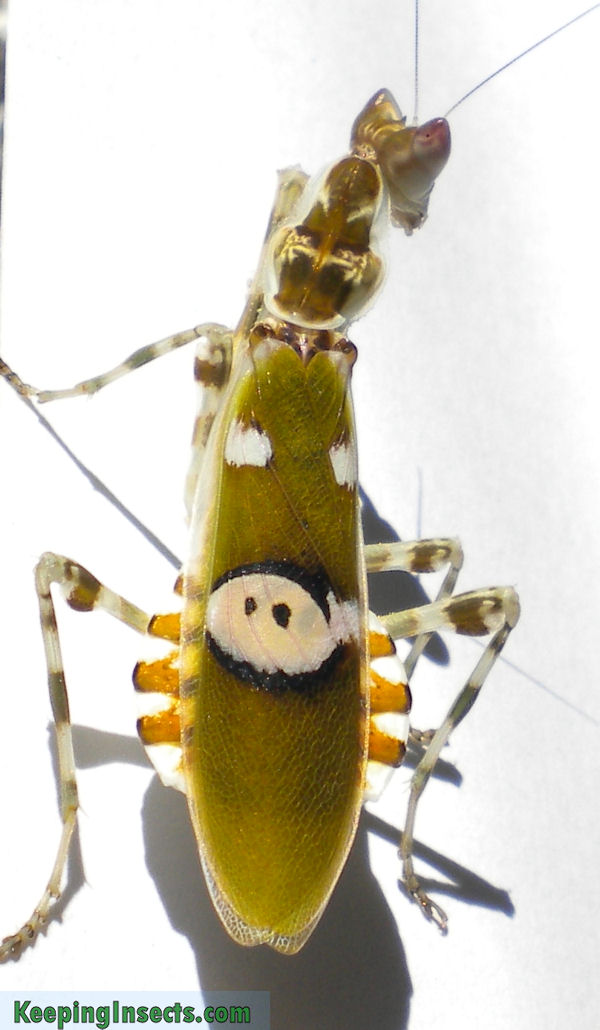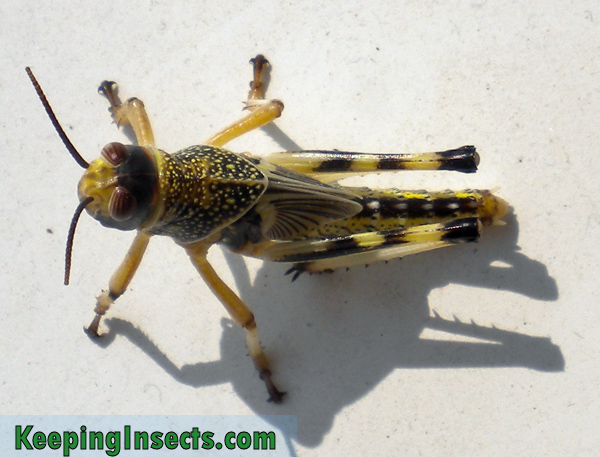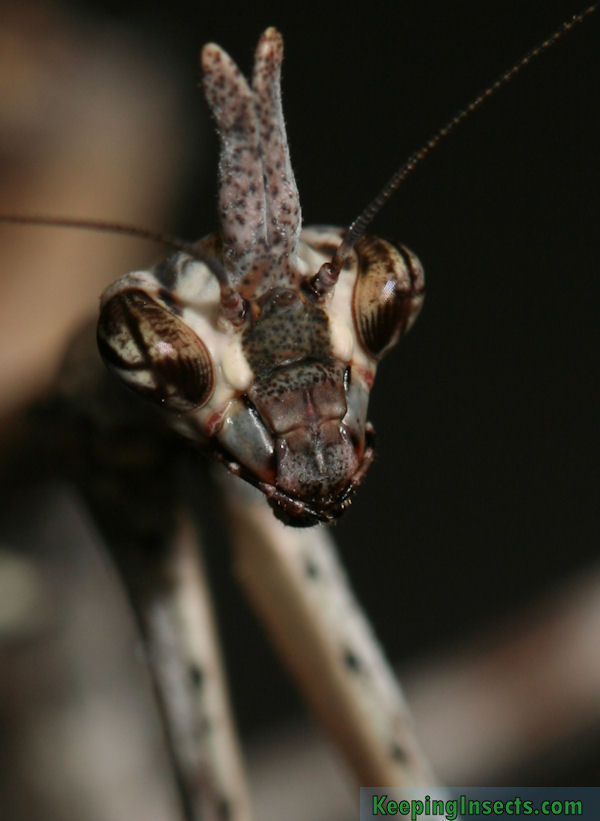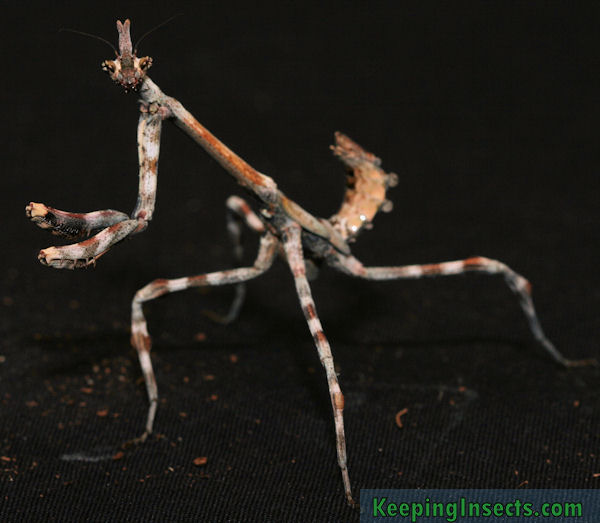The Giant Leaf Insect is a large species of leaf insect with the scientific name Phyllium giganteum. Leaf Insects are insects in the order of stick insects (Phasmatodea) that look like a leaf. Phyllium giganteum is one of the largest species of leaf insects that is kept as a pet.
Phyllium giganteum is referred to as PSG 72. In nature it can be found in tropical forest in Malaysia. This species consists of only females. Two dead museum specimens of Phyllium giganteum males have been found, but as these have never been seen alive or tested for reproductive capabilities it remains unclear what role males in natural populations of this species have. Females will lay unfertilized eggs, that will give rise to new females. In captivity there are no males.
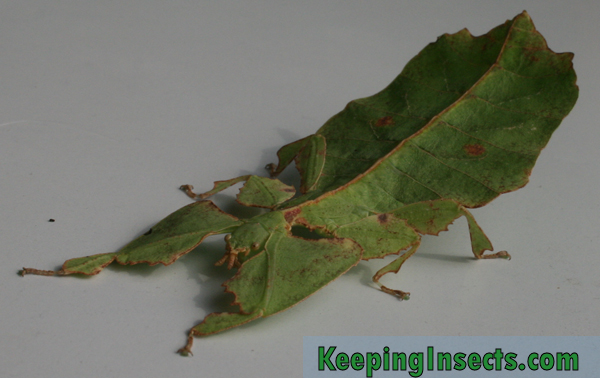
Appearance
Phyllium giganteum is a very wide and large leaf insect with a body shaped like a leaf. Also the legs have appendages making it look like leaves. The skin is green in color with brown spots around the edges. Two brown dots decorate the top of the abdomen. The shade of green and the amount of brown edges and spots differs between individuals. Females will become around 10 cm in lenght.
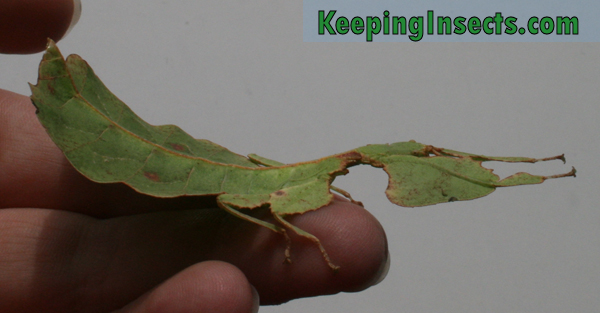
Phyllium giganteum female nymph, you can see how flat her body is.
Behavior of Giant Leaf Insects
Phyllium giganteum is a very docile species, like many stick insects and leaf insects. During the day it sits very still, during the night it will move and eat. The newborn nymphs are a bit hyperactive, however after their first molt they will remain very quiet. When you pick up a Phyllium giganteum female, it will generally just stay still to keep up the appearance that it is a leaf. It is hard to coax them into moving.
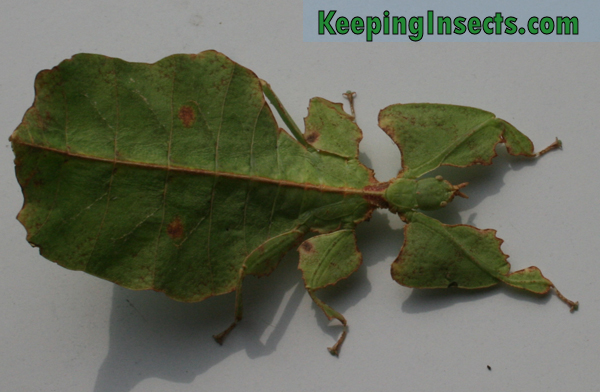
Phyllium giganteum female nymph
A young nymph of the Giant Leaf Insect Phyllium giganteum
Breeding Giant Leaf Insects
Adult female Giant Leaf Insects will start to produce eggs around 1 to 1,5 month after becoming adult. You can see it has reached adulthood by the big wings on their back. Only adult females have these wings. The eggs are small and black in shape and can be easily distinguished from droppings. The eggs are just dropped to the floor of the cage.
Collect the eggs and keep them on moist paper. Make sure no mold forms on the eggs or the paper, because this will kill the eggs. A good method to avoid mold is to let the paper dry up in between misting it with water. Keep the eggs at 25 to 30 degrees Celsius. The eggs will hatch after 6 to 9 months.
Indian Flower Mantis
The Indian Flower Mantis, or Creobroter pictipennis, is a mantis species in the flower mantis group. Creobroter gemmatus is very similar to Creobroter pictipennis, only the pattern on the wings is different. The care for both species is the same, therefore you can use this caresheet also for C. gemmatus.
An adult female Creobroter pictipennis
Schistocerca gregaria nymph
Arizona Unicorn Mantis
The Arizona Unicorn Mantis, or Pseudovates arizonae is a stick-like praying mantis from North America. It carries the name “Unicorn Mantis” thanks to a small cone in the middle of his head, resembling a unicorn horn! If you take a closer look, you can see the mantis actually has two tiny “horns” next to each other.
Pseudovates arizonae occurs naturally in North America, especially Arizona. It is not common in captivity. Some other mantis species, like Phyllobates sp, are also referred to as Unicorn Mantis.
Arizona Unicorn Mantis
Devils Flower MantisThis may be one of the most famous mantis species: The Devils Flower Mantis or Idolomantis diabolica. It’s amazing colors and size make it the most stunning mantis there is. It’s big and when adult has beautiful white with green markings, a big shield on its back and an amazing display behaviour showing red, white, black and blue markings.
This species is also infamous for its high price and difficulty in keeping and breeding. This mantis species occurs in Africa, most notably in Tanzania.
The famous picture by Igor Siwanowicz – deimatic display of an adult male Devils Flower Mantis






